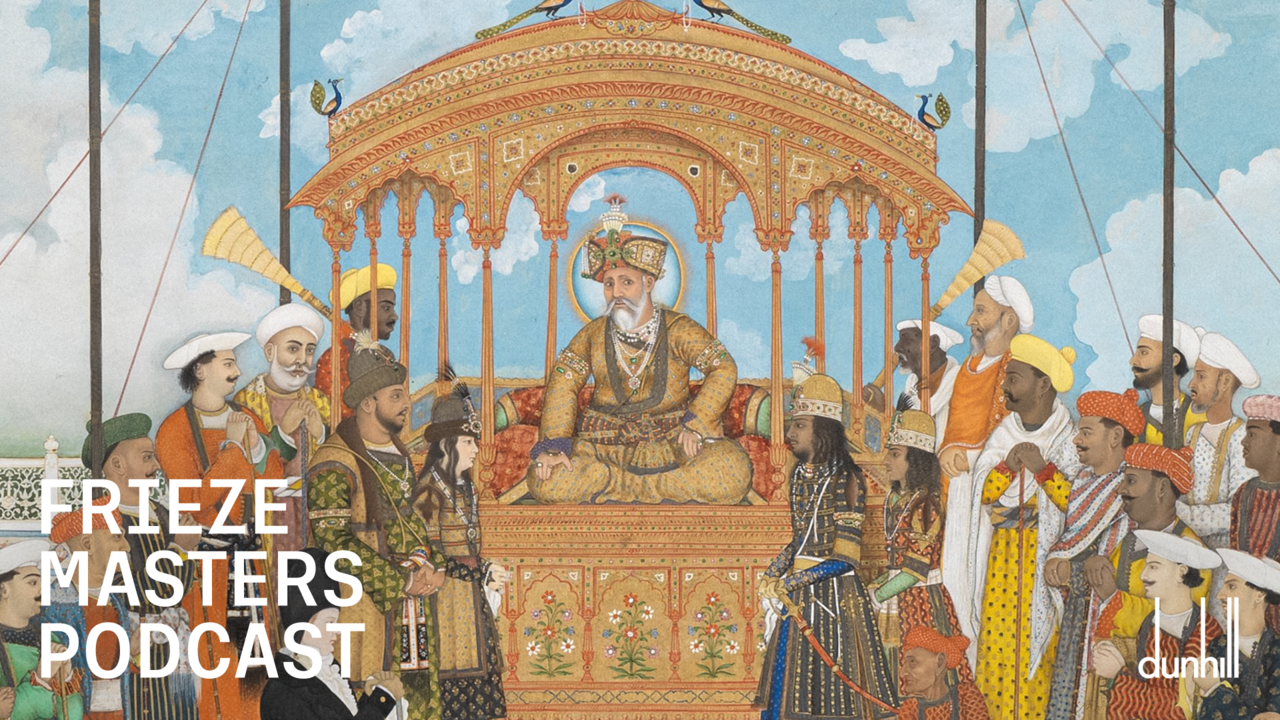Jens Haaning
Middelburg is a seaside resort on the Zeeland peninsula about 150 km south-west of Rotterdam. Like any tourist destination, Middelburg plays up its local colour, presenting itself as a Dutch idyll. Indeed, it has all the prescribed characteristics: a canal with colourful, oversized toy bridges; a town centre with picturesque Renaissance houses; and even a couple of castles. Beneath bright bunting, the outdoor cafés service their guests with Europop, interspersed with news or greetings for the holidaymakers. In case of bad weather, there is a packed programme of amusements. Next to the camping site is an arena for open air concerts, and the town square is crowded with colourful stalls offering African souvenirs, Thai food, flowers and 'I've been to Middelburg' T-shirts.
Facing this tourist pandemonium is de Vleeshal, formerly a meat market and now a Kunsthalle. Here, adjoining the church and the town hall, Jens Haaning has installed a clothing factory. Turkish-owned Maras Confectie, from the neighbouring town of Vlessingen, agreed to move its goods and machinery to de Vleeshal and continue production there. During opening hours, Maras Confectie and its twelve workers from Iran, Turkey and Bosnia, are part of the installation Middelburg Summer 1996 (1996); though more often than not, the workers pursue their deadlines long after closing time. Haaning's work thus deals with the social aesthetics of the exchange of territories a theme that embraces the opening up of institutional space, as well as various forms of migration. It is perhaps not unimportant that, during the period of Dutch colonialism, Middelburg was one of the first towns to trade with the Third World.
In this respect, Haaning very much appears to be an artist with a mission. You could call the ironic, aggressive seduction of his work an art of alienated power. Middelburg Summer 1996 is a continuation of other production line projects by Haaning, in which a number of people participate in a symbolically charged, but ultimately undefined activity. In Weapon Production (1995), for example, a group of youngsters, who had so to speak some prior experience, took part in making illegal street weapons; and in Flag Production (1996), flags were sewn for an unknown nation. Middelburg Summer 1996 is the first time, though, that a ready-made production line has been used and previous works of this kind are mere simulations in comparison.
The transformation of de Vleeshal into a factory marks a total reversal of artistic economies: the factory perfectly apprehends the space of the institution and makes it its own. An office and a canteen have been installed by the entrance; there are strip lights above the work tables; and on the end wall is a large, red, supporters' banner for the Turkish football club Besiktas. The noise of the sewing machines mixes happily with Türkü (a sort of Turkish blues), Michael Jackson and classical music. When entering de Vleeshal, you must, as a spectator, assume a peripheral and rather reticent position, in contrast to the specular command traditionally wielded at art exhibitions. The atmosphere and the activity make you feel like an intruder. Moreover, the artist's sphere of operation is reduced to a distant, purely administrative function. I arrived at the exhibition some hours before the opening, and the only people there were the workers. I asked the foreman if he knew where Haaning was he answered 'who?'.
This Readymade, with its metaphors of accumulation and productivity, and their economic connotations, suggests a commercial use of the institutional framework. Maras Confectie is a thriving business and sits uncomfortably with the typical Western-guilty-conscience idea of the 'lousy jobs we give our guest workers': during the eight weeks of the installation, the twelve workers produced £50,000 worth of goods. The symbolic value of this economic transaction speaks a worldly language everybody is likely to understand (or feel provoked by in the 'pure' context of the artistic sphere). For example, Maras Confectie was reimbursed for the loss of working hours caused by the staff having to talk to museum visitors. When industry, with all its economic power, enters the institution, the former loses its anchoring in society and plays with the significance of value. The art institution is a non-profit enterprise, usually subsidised, but has enormous cultural significance and social standing, together with the best address in town. In contrast, Maras Confectie, an apparently successful business, is hidden away in the suburbs, along with the cultural otherness it represents.
Haaning's striving for a form of social aesthetics could be said to stem from a desire to express what the Readymade can't communicate. Middelburg Summer 1996 involves a strategy of alienation, the pivotal point of which is social rather than aesthetic. If the beholder accepts the terms of the work, she finds herself in a void between the piece and its contextual setting: the working situation and the workers' nationalities displace the viewer, preventing a comprehensive view of the artwork. Consistency and communication aren't available assets in the contextual conflicts of the artwork, and its implicit claim seems to be that no one controls the all-encompassing, global economy, from which the average visitor to de Vleeshal has made a vain attempt to escape by going on holiday in Middelburg. The artwork suggests that there can be no freedom or actuality apart from activity and social exchange; but the question is where the beholder should take action how does one situate oneself in the life offered by the global supermarket?
The contradiction between powerlessness and the desire to make a difference link the social and the aesthetic experiences of Haaning's work. But, more importantly, his staging of clashes and transactions between different social and artistic economies takes place out of respect for the individual's self-esteem and desire to test his or her own sense of reality.















